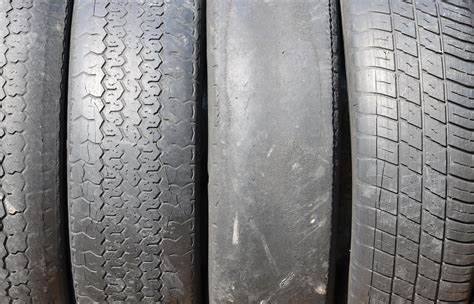
|
B
arry's
T
ire
Tech This is a series of articles on the technical aspects of tires, their care and usage. My primary purpose in these articles is to help people understand tires and thereby reduce the risks we all face every day. ..........and since tires is just about the only thing I know about.......... Please drop me a note if you have a topic you want to see: Barry@BarrysTireTech.com |
|
If you came here to research what is causing your odd and/or uneven tire wear, I suggest you read this page first, then go Here! |
|
Tire Wear - Normal: Most tire wear occurs when cornering. Driving straight ahead is almost free. Put another way, there is a difference between "City Driving" and "Country Driving" and country driving results in more miles out of a set of tires. There was a period in my career when I tested tires in the field. We would give tires to fleets (free!) and get data in return. Among the things we got was tire mileage. With this data, we could prove that the tires were capable of getting the warranteed mileage. I could tell the difference between which vehicles did in-town deliveries, and which delivered to the next town over - simply because of how rapidly the tires wore. There was one place where a vehicle was dedicated to traveling between St. Louis and Kansas City every day. That vehicle could get over 100,000 miles out of a set of tires, almost no matter what tire we put on it. This was not the only location where we got very long mileage! |
|
Ya' see, in order to generate the force needed to turn a vehicle, the tires have to generate a "Slip Angle" - the difference between the direction the tire is pointing and the direction it is actually going. The image to the right shows what happens to a tire during cornering.
And, of course, the greater the slip angle, the greater the cornering force, but also the faster the wear. "Spirited" driving isn't good for tire wear rates. |

|

|
That also means that vehicle alignment - especially toe - affects how rapidly tires wear. Not only does too much toe cause rapid tire wear, it also interacts with other alignment parameters, such as camber, Ackermann (various spellings!), and inflation pressure to aggravate the situation. One could think of toe as a multiplier for conditions that cause bad tire wear. |
|
UTQG Treadwear Test This is a US government required test for all passenger car tires, except for winter, deep tread (not sure what that means), dedicated spare tires, and tires whose production levels are below 15,000 per year. That also means that LT tires and other tires not designed for passenger cars (like ST tires) also are not required to be tested.
The treadwear rating is a number that is supposed to be displayed on the sidewall of the tire along with the other 2 UTQG ratings. |

|

|
The Test:
|
|
The Good News:
The comparison is to the SRTT (Standard Reference Test Tire) for EVERY test, so you can compare between brands. The government can require the tire manufacturer to show the documentation from the test. |

|
|
The Bad News:
|
|
The Science: More rubber on the road = slower wear rate. The image to the right is an exaggerated example of how this could work. It is my understanding that the reason this is so is that with more rubber in contact with the road surface, the more force is generated during cornering, so less slip angle for a given cornering force. The average person wouldn't notice the difference, but the tire does. |
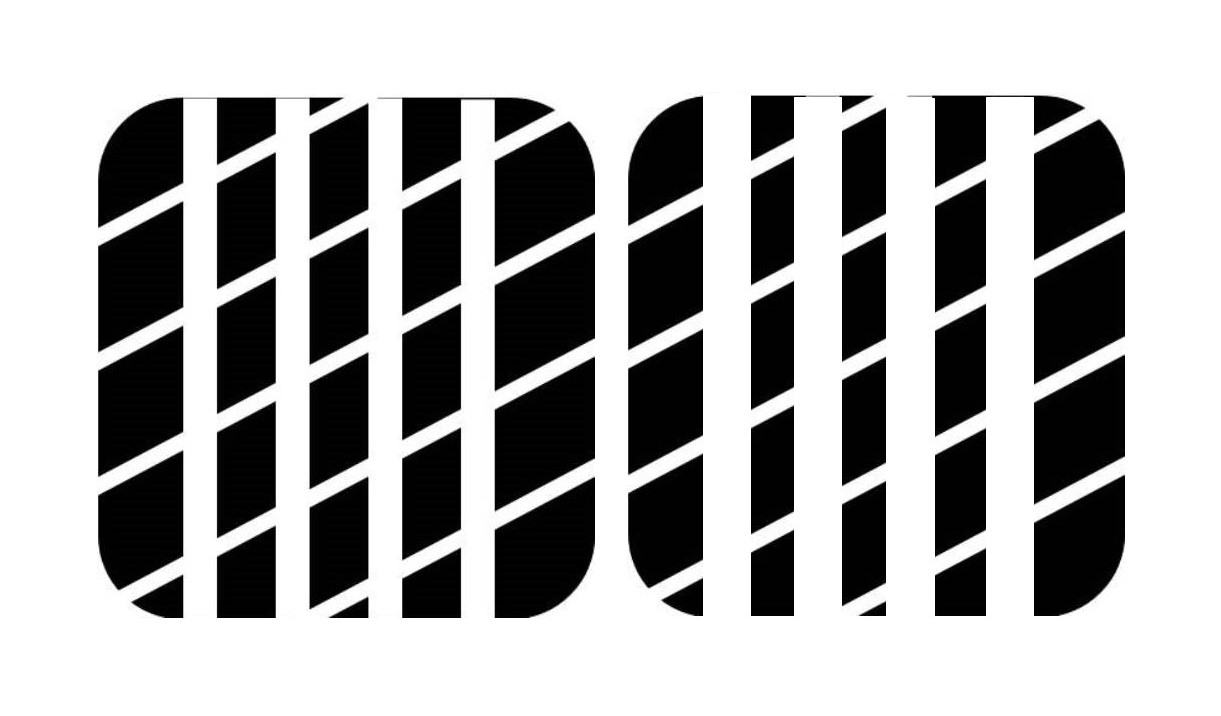
|
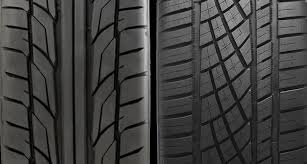
|
The larger the tread elements, the better the wear rate. Notice in the photo to the left, how the individual tread elements are different sizes? The tire on the left is going to wear better than the tire on the right - all other things being equal. UNFORTUNATELY, all things aren't usually equal. In particular, the tread rubber compound is likely different - and tread compound can have a HUGE!! difference. |
|
Rolling Resistance, Traction, and Tread Wear? There is a technology triangle involving Rolling Resistance, Traction (especially wet traction), and Treadwear. This would be the time to explain about the chemistry of tread rubber compounding - but I'm just not knowledgeable enough to do that. But I can say this: There appears to be "families" of tread compounds, where the ingredients are varied to produce different levels for each of those 3 properties. Visually, it's like placing a dot somewhere inside that triangle and getting differing levels of performance - all in relation to each other. |

|
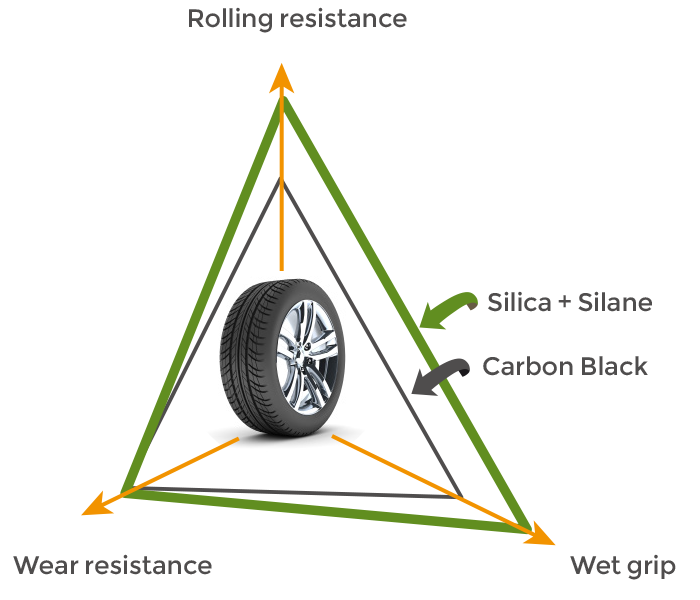
|
But the rubber chemists are a talented bunch and they are constantly figuring out how to change that triangle.
To the left is an illustration of how that might take place. The green triangle is what happens (exaggerated) when Silica and Silane are used in a tire. That means there is a whole new family of tread compounds. That's the principle behind tires labeld LRR (Low Rolling Resistance) or some other related verbiage. It doesn't mean that the rolling resistance is actually low. It means that the rolling resistance is better compared to tires with similar wear and traction levels. Put a different way, LRR is a relative, not an absolute, term. |
|
Treadwear Warranties: A warranty is not a guarantee. A warranty is about what happens if the product doesn't perform as indicated - in this case, that the tire is worn out before the indicated mileage. There are always provisions that affect the warranty: |
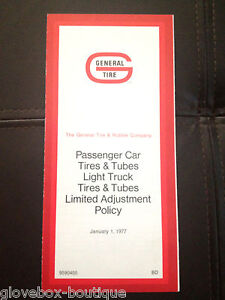
|
The net effect is that very few mileage warranties are accepted. Unfortunate, but true. That is why the mileage being warranted is usually quite large. The cost to the manufacturer is soooo very little, but the dealers love them - and so the marketing folks love them, too! |
|
Barry's Tire Tech: Unusual and Uneven Tire Wear |